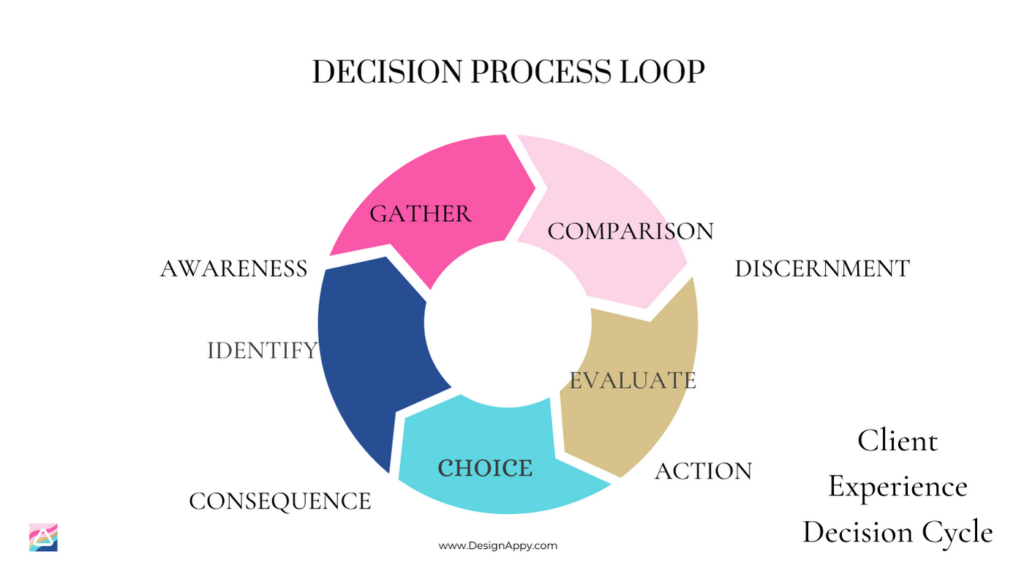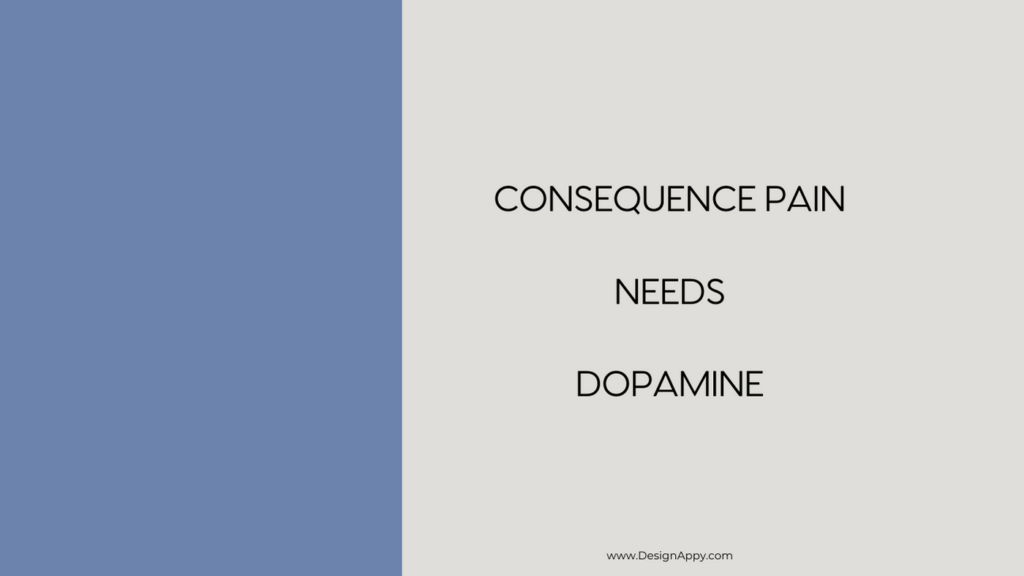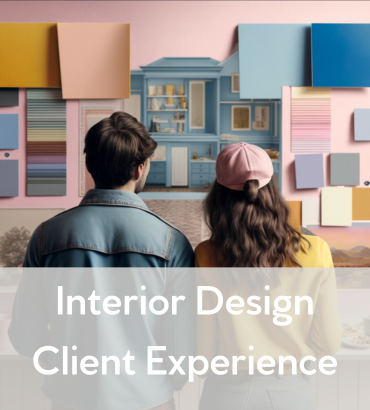
The interior design client experience is consistent among most designers, so you’re not alone in this journey. Interior design involves much more than just making things look good. It encompasses handling construction documents, contracts and coordinating furniture orders and logistics. Throughout this process, certain behaviors, both positive and negative, tend to surface and influence the overall experience.
By gaining insight into the interior design client experience, we can work towards creating a more pleasant and smoother journey for everyone involved. We can learn from common human behaviors and equip ourselves with coping tools to address potential issues before they become significant problems.
Although the design process follows a similar path, each client will interpret and react differently based on their circumstances and resources. For example, someone with a background in project management may approach the experience differently than a stay-at-home mom who faces criticism for spending money on themselves. These behavioral nuances often come to light and play out during the home design process.
The decision-making process can be pretty complex, and interior design clients will navigate it repeatedly throughout their home design project. It’s important to acknowledge that there may be moments of discomfort and consequences along the way. While popular home design shows on HGTV tend to portray the interior design process as an exciting and life-changing experience with a dash of drama and humor, the reality is that it’s a more nuanced and involved journey.
Too Many Choices = No Decisions

Let’s explore the paradox of choice presented by Barry Schwartz and how it relates to the interior design process.
Imagine two scenarios. In the first scenario, you have seven healthy and adorable puppies, all of whom will find loving homes. You have the opportunity to choose one of them.
In the second scenario, you have access to every puppy worldwide. You hear the story of each homeless pet, and they are all available to choose from. However, you can only pick one, and many other puppies will never have the chance to experience a loving home or a good life.
Which scenario would you prefer to be in? Now, let’s apply this analogy to making selections for your home with the help of an interior designer. The designer will bring you two to three carefully vetted options, considering factors like durability, maintenance, size, availability, and budget. They act as superheroes, leveraging their experience from previous projects to prevent common mistakes.
It’s common for people to believe that they need to see every possible option to know what they want. However, the reality is that this approach often leads to decision paralysis. Only contemplating some choices can hinder progress and the value of making a decision and moving forward. By working with an interior designer who narrows down the options for you, you can avoid getting stuck and make meaningful progress toward achieving your desired outcome.
A Good Client Experience Needs Context

A good client experience in interior design requires understanding the context of an item and how it can either increase or devalue its perceived worth.
Let me illustrate this point with an example:
Imagine you’re searching for the perfect sofa for your living room. You come across two options: Option A, and Option B. Option A is a beautifully designed, high-quality sofa with a rich history. It’s made by a reputable brand known for its craftsmanship and attention to detail. Option B, conversely, is a generic, mass-produced sofa with no distinct features or story behind it.
In this scenario, the context of Option A significantly increases its value and potential for satisfaction.
The fact that it’s crafted by a renowned brand known for its expertise gives it a sense of exclusivity and quality. The rich history behind the sofa adds depth and character to the piece, making it more unique and desirable. As a result, when you finally select Option A for your living room, you experience a sense of satisfaction from knowing that you’ve chosen a unique and meaningful item.
On the other hand, Option B lacks any meaningful context or unique qualities. It’s just another mass-produced piece without any story or notable features. Option B might leave you feeling unsatisfied, as it offers a different depth or connection than Option A.
This example highlights how understanding the context and backstory of an item can significantly impact your satisfaction. It demonstrates that happiness thrives in a world purposefully crafted for it, and knowing the rules to cultivate joy can guide your decision-making process. It also emphasizes that too many open-ended choices without a clear understanding of their context can diminish your chances of finding true satisfaction.
Interior Design Satisfaction

Creating a satisfying client experience in interior design involves incorporating surprise, delight, personalization, and uniqueness. These factors contribute to the feeling of finding something unique and tailored specifically to the client’s preferences and needs. This concept is effectively utilized in the marketing strategies of retailers like Marshalls and TJ Maxx, where the element of surprise in finding hidden gems at discounted prices adds to overall satisfaction.
Barry Schwartz’s quote, “Cumulative small decisions will cause substantive distress,” reminds us that while the design process involves many small decisions, bombarding clients with excessive choices can be overwhelming and lead to dissatisfaction. Instead, presenting clients with a cohesive and well-defined big-picture concept allows for a more decisive and fulfilling experience.
Being interrogated or overwhelmed by numerous small decisions, like filling out a lengthy medical intake form, can be off-putting. Considering the client’s emotional journey throughout the design process, offering a comprehensive solution or package rather than multiple individual choices can make them feel more comfortable and confident in their purchase decisions.
Interestingly, research has shown that offering a no-return policy can provide comfort and reduce post-purchase regret. This is because it encourages clients to think more critically about their choices and evaluate the value and suitability of the solution before committing to it.
When clients can mentally quantify the benefits they will receive from their design solution about the amount they are investing, the satisfaction derived from the answer feels like a rewarding outcome. This helps create a positive perception of value and reinforces the belief that the investment was worthwhile.
By understanding and implementing these principles, interior designers can craft a client experience that fosters satisfaction, delight, and a sense of reward throughout the design journey.
Lack of Satisfaction in the Interior Design Appointment

In a client appointment, a lack of satisfaction can arise from various factors, and a negative experience during the meeting can significantly impact the overall feeling. For instance, if the client is experiencing negative emotions or annoyance due to issues like low stock, backorders, or going over budget, these elements can color their perception of the entire appointment. They may view it as a trade-off, feeling like they had to compromise on their expectations or settle for less than desired. This negative experience can become a source of future dissatisfaction, influencing their overall perception of the project and their relationship with the designer.
Additionally, social comparison can further contribute to this sense of dissatisfaction. When clients compare their experiences or outcomes to others, it can lead to self-inflicted violence, where they harshly judge themselves and their decisions. This self-comparison only results in negative emotions, and nobody benefits from it. Instead of focusing on their unique journey and goals, clients may feel inadequate or envious of what others have achieved or received. This mindset needs to change to improve their satisfaction and ability to appreciate their design process’s progress and positive aspects.
Recognizing the potential impact of negative experiences and the harmful effects of social comparison is crucial in fostering a satisfying client experience. Designers should address issues promptly and transparently, offering solutions or alternatives to mitigate any setbacks. Creating an environment of open communication, empathy, and understanding can help alleviate frustrations and foster a sense of trust between the designer and the client.
Encouraging clients to focus on their unique journey and celebrating their individual progress can counteract the adverse effects of social comparison and promote a more satisfying overall experience.
Decisions: The Process + Drugs

Making decisions can sometimes feel like going through a wild adventure, complete with its own steps and even a touch of drug-like excitement. Let’s break it down into five steps, shall we?
Step 1: Identify. First things first, you need to be aware of the problem at hand. It’s like discovering a mysterious treasure map and realizing something is exciting to uncover.
Step 2: Gather. Like a curious explorer, you embark on a journey to find viable solutions. You gather information, ideas, and options, uncovering hidden gems.
Step 3: Compare. Now comes the discernment phase, where you put on your detective hat and carefully compare the different possibilities. It’s like solving a thrilling mystery, trying to find the best solution that will lead you to the ultimate prize.
Step 4: Evaluate. Time for some due diligence! You examine each option closely, conducting your investigations and analysis. It’s like being a brilliant scientist in a laboratory, mixing ingredients to create the perfect formula.
Step 5: Choice. Ah, the moment of truth! You make the decision, take action and embrace the consequences. It’s like jumping off a cliff into a pool of excitement, ready to experience the thrill of your choice.
So, making decisions is not just a simple process—it’s an adventure filled with anticipation, discovery, and a touch of daring. Embrace it and enjoy the journey!
Consequence Pain < Choice = Dopamine

Let’s dive into the fascinating world of dopamine and how it relates to making decisions. When we buy something or choose, it triggers a dopamine release in our brains. Dopamine is often called the “feel good” hormone because it generates a sense of pleasure and reward.
Now, here’s where it gets interesting. Once we become aware of this connection between decision-making and dopamine, we understand that client behavior follows a similar pattern. When the decision-making loop is left incomplete, clients can experience a sense of unease or dissatisfaction, like a puzzle with a missing piece.
When clients cannot reach a decision and don’t hear that “pay bell” of completion, they can find themselves stuck in a loop. They’re yearning to reach that point of commitment, where they can experience the satisfaction and dopamine kick from completing a task.
Imagine it as if they’re playing a game, just one move away from winning, but they can’t make that final move. It leaves them in discomfort, seeking to complete the loop and find that sense of fulfillment.
Understanding this dynamic is essential for interior designers. By recognizing the significance of completing the decision-making process, designers can guide clients towards making choices and reaching that satisfying payoff. It’s about helping clients break free from the loop of indecision and enabling them to experience the joy and reward of finalizing their decisions.
So, next time you’re working with a client, remember the power of completing the loop and delivering that dopamine kick. It’s not just about making choices—it’s about creating a fulfilling and rewarding experience for your clients.
Why A Client Shops You

Have you ever wondered why clients sometimes shop and compare items even after their appointment and approval? It’s all about the decision cycle and the closure of loops.
During a client appointment, interior designers work hard to close numerous decision loops. These loops represent comparing, evaluating, and ultimately making choices. Ideally, clients should feel a sense of celebration by the end of the appointment, knowing that their decisions have been made and the loops are closed.
However, if clients don’t believe their loops are closed, they may continue to dwell in the discernment phase. This can manifest as continued shopping, exploring other options, or changing their selections. It’s as if they’re searching for that missing piece that will bring them a sense of closure and satisfaction.
Completing the task at hand provides a significant dopamine hit and a reason to celebrate. If designers don’t proactively facilitate this process, clients may feel the need to do it themselves. They’ll keep searching and comparing, hoping to find that moment of completion and the accompanying sense of accomplishment.
To prevent this situation, designers need to recognize when the task is done and help clients move forward. By ensuring that the purchase is completed before ending the appointment, designers can provide clients with the closure they need. This helps avoid the continuous loop of indecision and promotes a more satisfying client experience.
Now, let’s step into the shoes of a homeowner working with a designer and explore the client experience from their perspective. It’s time to shift our focus and consider how they navigate the process, their hopes, concerns, and their overall journey in creating their dream space.
Client Experience Summary
We’ve delved into the client experience in interior design, exploring the various aspects contributing to a satisfying journey. From understanding the predictable nature of client behavior during the design process to the impact of context and decision-making, we’ve highlighted key insights to create a better, more enjoyable experience for both designers and clients.
We’ve discussed the paradox of choice, emphasizing the importance of providing clients with curated options rather than overwhelming them with endless choices. Additionally, we’ve explored the significance of context in valuing and devaluing items, illustrating how the proper context can enhance satisfaction.
The article also touches upon the impact of negative experiences, social comparison, and the dopamine-driven nature of decision-making. By recognizing the potential pitfalls and addressing them proactively, designers can foster a more positive and fulfilling client journey.
Please comment and share your thoughts on the client experience in interior design. If you want to delve deeper into the topic, consider purchasing the book, ” New Rules for Interior Design,” which offers further insights and strategies for creating exceptional client experiences. Additionally, don’t forget to catch our podcast, “Clients Do Simple Math,” where we dive into the intricacies of client interactions and share valuable tips and advice.
Understanding and enhancing the client experience is crucial for creating successful and satisfying design projects. Let’s continue the conversation and elevate the world of interior design together.
Leave a comment below! We can’t wait to hear from you and share more valuable content on the client experience in interior design.


Joining Walloro.com as an interior designer has been one of the best decisions of my career! The incredible support and resources from the Walloro team have made my journey so rewarding. From access to high-end wallpapers and décor to invaluable design insights, Walloro empowers you to bring your creative vision to life. If you’re passionate about design and want to work in an inspiring environment that truly values your talent, I highly encourage you to consider becoming a part of Walloro. It’s a place where your creativity can flourish, and you’re always supported to grow and succeed!